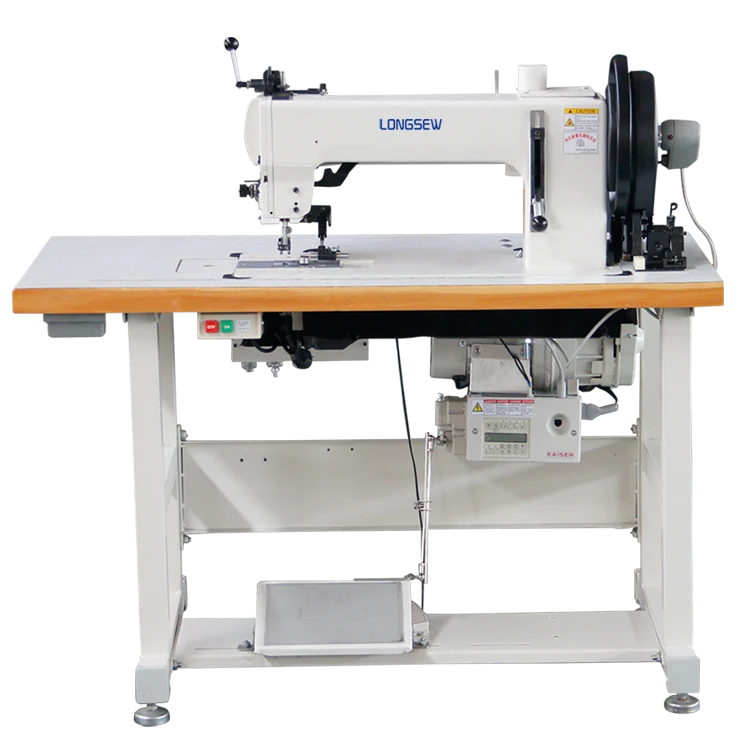industrial serger machines
Understanding Industrial Serger Machines An Essential Tool for Textiles
In the world of textile production, efficiency and precision are paramount. This is where industrial serger machines come into play. Designed to meet the demands of high-volume sewing operations, these machines are essential for achieving professional-quality seams and finishing edges in fabrics. This article explores the functionality, advantages, and applications of industrial serger machines, providing insights into why they are an indispensable part of the garment manufacturing industry.
What is an Industrial Serger Machine?
An industrial serger machine, or overlock machine, is a specialized sewing device that uses multiple threads to sew seams while simultaneously trimming excess fabric. These machines are capable of producing a variety of stitches, including overlock stitches, rolled hems, and flatlock seams. Industrial sergers are designed for heavy-duty use, capable of processing large quantities of fabric at high speeds, making them a crucial tool for any textile industry.
Functionality
The primary function of an industrial serger machine is to finish the edges of the fabric to prevent fraying, while also providing a professional-looking seam. The machine typically involves a combination of upper and lower loopers that work with needles to create a secure stitch. Most serger machines can accommodate anywhere from two to five threads, allowing for various stitches and levels of complexity in seam construction.
For manufacturers, the ability to modify the stitch length and differential feed is crucial; these features ensure that different types of fabric can be handled with ease and precision. Differential feed, for instance, allows for the adjustment of fabric feeding rates, which is essential for sewing delicate fabrics or preventing puckering.
Advantages of Industrial Serger Machines
There are several significant advantages to using industrial serger machines in production environments
1. Speed and Efficiency Industrial sergers are built for speed, capable of sewing at rates that far surpass domestic machines. This speed translates to increased productivity, reducing downtime and increasing output in textile manufacturing.
2. Quality Seam Finishing The precision of the overlock stitch not only strengthens seams but also provides a clean, professional finish that enhances the quality of the final product. This is especially important in garments where aesthetic appeal is crucial.
industrial serger machines

3. Versatility With the ability to produce various stitches, sergers can be used for a wide range of applications, from sewing seams to creating decorative finishes. They are capable of handling different types of fabrics, including knits, wovens, and stretch materials.
4. Cost-Effective Production The use of sergers can be a cost-effective choice in high-volume production. By reducing fabric waste and improving sewing efficiency, manufacturers can lower production costs while maintaining quality.
5. Ease of Use Many industrial sergers come equipped with user-friendly features such as automatic tension adjustment, making them accessible for operators with varying levels of experience.
Applications of Industrial Serger Machines
Industrial serger machines are widely used across various sectors of the textile industry. Their applications include
- Garment Manufacturing From t-shirts to formal wear, sergers are invaluable for finishing seams and edges in clothing production. Their ability to handle stretch fabrics makes them particularly important in activewear and lingerie sectors.
- Home Textiles In the production of items such as curtains, bedding, and upholstery, sergers ensure that the edges are neatly finished, providing durability and a professional appearance.
- Industrial Products Sectors dealing with technical textiles, such as automotive upholstery, workwear, and medical textiles, also benefit from the efficiency and precision provided by industrial sergers.
Conclusion
Industrial serger machines represent a vital component of modern textile manufacturing. Their ability to combine speed, efficiency, and versatility helps manufacturers produce high-quality products that meet the demands of an ever-evolving market. As the textile industry continues to grow, the reliance on advanced sewing technology like sergers is likely to increase, solidifying their place as essential tools in the garment production process. Investing in a reliable industrial serger machine can yield significant returns, not only enhancing productivity but also elevating the quality of the final product. For any business looking to thrive in the competitive world of textiles, incorporating an industrial serger machine into their production line is a step towards success.
-
Boost Production Efficiency with a Pattern Sewing MachineNewsAug.29,2025
-
Industrial Excellence with the Best Heavy Duty Sewing MachineNewsAug.29,2025
-
Precision and Power with the Best Pattern Sewing MachineNewsAug.29,2025
-
Reliable Bulk Packaging Starts With the Right FIBC Sewing MachineNewsAug.29,2025
-
Advanced Packaging Solutions: Elevate Productivity with Jumbo Bag Sewing Machine and Industrial Stitching EquipmentNewsAug.29,2025
-
High-Performance Solutions for Bulk Packaging: FIBC Sewing Machine and MoreNewsAug.29,2025
-
Maximize Efficiency with an Industrial Cylinder Arm Sewing MachineNewsAug.28,2025


























